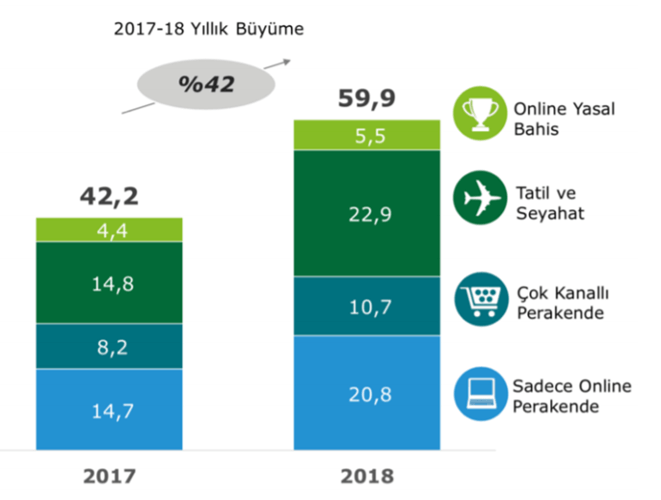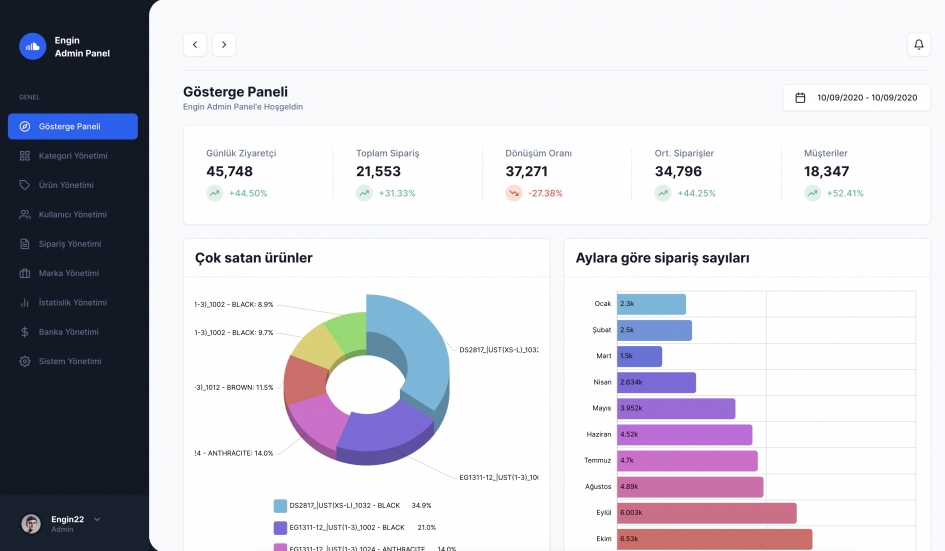
E-Commerce Consultancy
Many people can answer the questions of what is e-commerce and how to do it differently based on their own commercial perspective. E-commerce, which is a multifaceted subject, needs different areas of expertise such as website setup, product supply, integration solutions, logistics solutions, online advertising, payment solutions. The timely and accurate realization of e-commerce ideas will be realized in a healthier way with the contributions of e-commerce consultants.
E-commerce Consulting Topics:
-
How to do e-commerce?
There are certain steps you need to follow in order to make a successful e-commerce venture. When starting e-commerce, you first need to determine the services or products you want to offer. Then you need to have a detailed knowledge of the service or product you will offer by conducting market research on the relevant sector. As a second step, you need to step into the digital world that distinguishes e-commerce from normal trade. For this, you must have an e-commerce website with a strong infrastructure prepared by experts. After your website is established, you need to open a company that will enable you to issue invoices and become a taxpayer. After all these stages, you need the necessary online advertising and social media advertising services. You can start e-commerce by realizing these stages
-
E-commerce in Turkey
As in the world, the volume of e-commerce in Turkey is constantly growing. It is thought that this volume will grow even more in the coming years. This is because there is a consumer profile in Turkey that can easily adapt to technological developments. The main dynamic in the rapid development of e-commerce in Turkey is mobile internet usage and mobile applications. E-commerce in Turkey contributes to the growth of the retail, technology and tourism sectors.

E-Commerce and E-Export Figures in Turkey
- In 2018, the e-commerce volume reached 59.9 billion TL and grew by 42% compared to the previous year.
- In the last 5 years, the market share of the top 10 shopping sites increased from 40% to 53%.
- The average annual growth rate of the e-commerce sector between 2014-2018 was 33%.
- In 2018, e-commerce sales in the holiday and travel sectors grew by 54% year-on-year to TL 22.9 billion.
- Of the 3.1 million businesses operating in Turkey, 55%, or 1.7 million businesses, use Facebook, Instagram, Whatsapp and Facebook Messenger.
- The top 10 countries with the most e-exports from Turkey between January 1 - December 31, 2018 are as follows; USA, Germany, Saudi Arabia, France, United Kingdom, Italy, Netherlands, Jordan, United Arab Emirates and Spain.
- The top categories in e-export product groups are; clothing, accessories, jewelry, footwear, carpets, carpets, herbal products, spare parts, etc.
-
Types of E-commerce
-
Business to Business (B2B)
The B2B e-commerce model, which is business-to-business in Turkish, is one of the most popular e-commerce models. In the B2B e-commerce model, there is a trade between the manufacturer-wholesaler or wholesaler-retailer. In the B2B model, consumers are not in the equation.
Business to Consumer (B2C)
The B2C e-commerce model, which is business-to-consumer in Turkish, is the most popular e-commerce model. In the B2C e-commerce model, there is a trade between the manufacturer or wholesaler and the consumer. Sites such as Amazon, AliExpress, Trendyol, and Hepsiburada are the best B2C examples.
-
Consumer to Business (C2B)
The C2B e-commerce model, which is consumer-to-business in Turkish, is the opposite of the B2C model. In the C2B e-commerce model, the consumer offers services or products to the business instead of the manufacturer or wholesaler. A C2B example is when a photographer takes photos for a business.
-
Consumer to Consumer (C2C)
The C2B e-commerce model, which is consumer-to-business in Turkish, is the opposite of the B2C model. In the C2B e-commerce model, the consumer offers services or products to the business instead of the manufacturer or wholesaler. A C2B example is when a photographer takes photos for a business.
-
Business to Employee (B2E)
The B2E e-commerce model, which stands for business-to-employee in Turkish, refers to a more closed system than other models. In the B2E e-commerce model, which is an in-house shopping network, companies offer special campaigns to their employees.
-
Business to Government(B2G)
The e-commerce model, which is business-to-government in Turkish, generally refers to the online tendering of governments and the online monitoring of these tenders by businesses. This system is also considered an e-commerce model, as businesses carry out transactions online before offering their services.
-
-
E-commerce Cargo and Logistics Management
One of the most important factors that make e-commerce attractive is that consumers can have the products they want to be delivered to their homes without leaving their homes. In order to ensure that the products ordered with e-commerce reach the consumer, we need cargo and logistics systems. Cargo Integration software is used for this. Thanks to Cargo Integration software, vital operations such as notifying the order to the cargo company, barcoding, informing the customer through e-mail or SMS, and displaying the cargo number, departure, and arrival information of the order on the e-commerce website can be done automatically.

-
E-commerce Payment Methods
The most common payment method used by consumers during e-commerce is credit card. Thanks to the mandatory use of SSL on e-commerce websites, consumers can safely make online purchases with their credit cards. In addition, the 3D Secure system, which works by the consumer's bank sending a code before completing the payment, also enables consumers to make e-commerce transactions safely. Although it is used much less frequently than credit card, EFT / Money Order method can also be used in e-commerce websites.

-
Marketplace Integration Solutions
You can make your e-commerce website integrated with marketplaces such as amazon, eBay, and Shopify. Thanks to special e-commerce integration software, you can manage marketplaces through your own website without the need to enter the site of a 3rd party service provider.

-
Secure E-commerce and IT Law
Law always follows social events from behind. With the rapid spread of e-commerce in our country and in the world, a number of new legal regulations have been made in the context of e-commerce in order to prevent people from being victimized on this platform. It should not be forgotten that the main objective of these regulations is to protect users and businesses against malicious users. In accordance with legal regulations, businesses are required to protect the confidentiality of users' data. In addition, the use of SSL Certificates has become mandatory, and businesses are prohibited from sharing promotional information to their customers via e-mail and SMS without the consent of the customers. In addition, the consumer can withdraw from the purchase of the product and service within 14 days without penalty.

To get a quote for these services, simply contact us through the contact form or send us an e-mail
